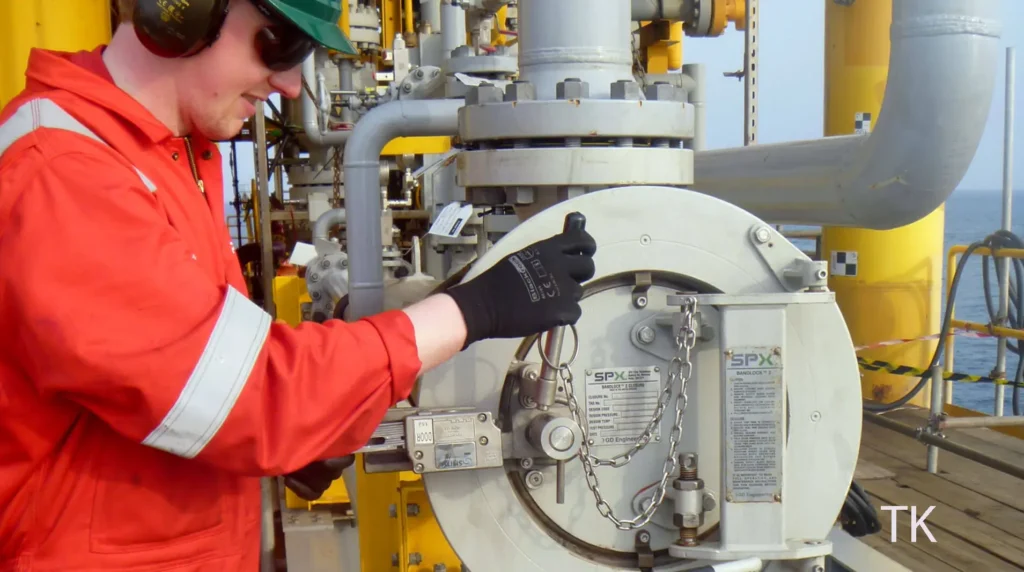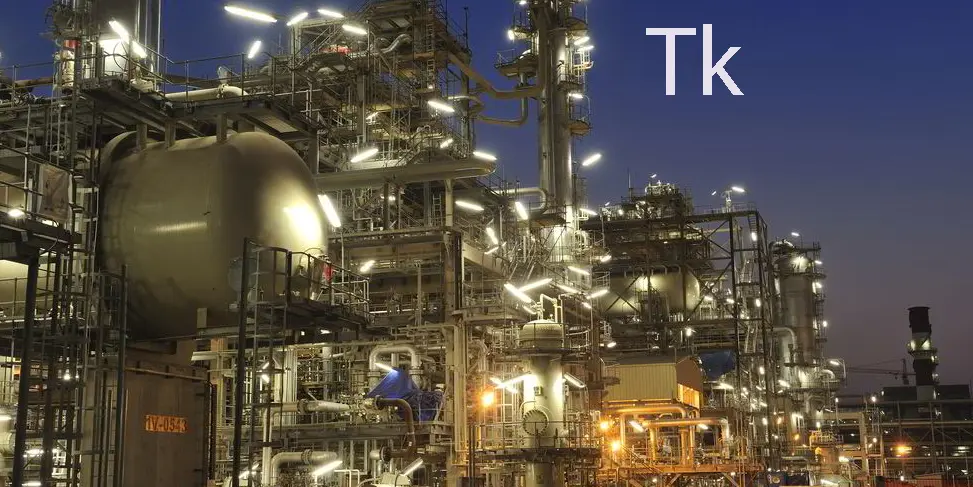Pigging is a maintenance process used in industries. Types of pigging are used to clean and examine. Additionally, it serves to maintain pipelines without halting the product flow within them. It is especially used in batch-based and sanitary industries for cleaning fluids and to reduce the product discharge

What is pigging?
Pigging is a procedure that is used in industries to clean and inspect pipelines and to maintain the flow of product inside pipelines. Basically, in pigging, a device is sent through pipelines to perform a cleaning process and separation of products without stopping the flow of the product inside the pipelines. This device is called “Pig.”
Pigs
Originally, the pig is a mechanical device made of straw wrapped in wire mesh, and it creates a squealing sound as it moves through the pipelines.The body of the pig is made of plastic or metal. Its sealing discs are made of polyurethane to create a seal against pipeline walls. It also has brushes to remove wax or debris. Moreover, it has electronic sensors to inspect the pipeline’s integrity.
Types of Pigging
There are several types of pigging based on the pigs used.
Utility pigging
It is usually used for maintenance and cleaning purposes. It has cleaning pigs to remove wax, debris, sand, waste, and liquid from the pipelines. Moreover, this type of pigging contains sealing pigs to create a strong and tight seal to push the liquid and product through the pipelines.
Inspection Pigging
This type of pigging is also called intelligent or smart pigging. It also uses smart pigs with sensors to detect cracks, wall thickness, weld integrity, and corrosion.
Product Recovery Pigging
Product recovery pigging ensures minimal waste of product. It is used to recover the residual product from pipelines. Moreover, Product recovery pigging is used in multiple industries, like the food and pharmaceutical industries. It also reduces cleaning time. It helps industries to recover 99% of their product and increase efficiency.
Batching Pigging
Batching pigging is used to separate different products in the same pipeline. To avoid mixing of products, each batch is separated by a pig. It is also frequently utilized in multi-product pipelines, including those that transport jet gasoline, diesel, and jet fuel.
Gel Pigging
In this type ofg, a gel-like substance is used to clear pipelines. This type of pigging is useful when pigs can not be used due to a change in pipe diameter. Gel easily flows through any type of pipe diameter.
More Method and Type of pigging
The pigging refers to different methods used in pipeline pigging operations. The main types of pigging are given below.
Cleaning Pigging
Using cleaning pigging, waste material such as wax, sand, liquid, extra water, raw material, and debris from inside the pipelines is removed. The types of pigs commonly used in cleaning pigging are foam pigs, brush pigs, and mandrel pigs.
Spherical Pigging
In these types of pigging, soft or hard spheres are used for cleaning purposes and product separation in gas pipelines.
Separation Pigging
Separation pigging is used to separate different products in multi-product pipelines. It is also used to inject or remove chemicals in multiple pipelines. The type of pigs that are used in pigging are solid cast pigs and foam pigs.
Dewatering Pigging
Dewatering pigging is used to remove extra water from the pipelines after hydro testing. The types of pigs that are used in dewatering pigging are cup pigs and foam pigs.

Pigging Pipeline
Pipeline pigging is a type of pigging that is used in the maintenance as well as in the inspection process. This process is used in gas, oil, water, and chemical pipelines. It also uses a pig device to maintain the flow of product without stopping. The major purpose of pipeline pigging is cleaning, inspection, reducing the mixing of products, and also separating different products in multiple pipelines.
Pigging components
Pigging components used in pigging pipeline
- Pig Launcher is used to inject pigs into pipelines.
- Pig Receiver collects the pig at the end of the pigging process.
- The bypass system allows the continuous flow of product during pigging.
- Control instrumentation to monitor the movement of pigs. Pipeline pigging extends the pipeline’s life and maintains the flow of product in pipes. It also prevents contamination and reduces the risk of leakage or failure.
Ice Pigging
Ice pigging is a type of pigging. It is a standard pipeline cleaning process that uses slush-like ice slurry instead of a pig device. Ice slurry is introduced into the pipeline to clean the inner walls during ice pigging. This ice slurry is a semi-solid plug that flows like a liquid through pipelines. It is especially utilized in a variety of industries, where flexibility, hygiene, cleanliness, and minimal disruption are more important. It involves making an ice slurry and inserting it into the pipelines using pumps. The ice slurry moves through pipes and starts cleaning them as it moves. The melted ice exits the pipeline and is safely disposed of. Ice pigging has more flexibility as compared to traditional pigging.
Benefits of ice pigging
1. Ice pigging is highly effective in cleaning sediments, biofilm, and manganese.
2. It requires only small-diameter access points like hydrants or valves.
3. Ice is soft, so the risk of damaging pipes is reduced.
4. The ice is made up of potable water, so it naturally melts after use, leaving no residue.
5. It also works on a wide range of pipe sizes, which is useful in the waste food and water industries.
6. Its operative time is fast as compared to other cleaning methods.
Benefits of pigging and types of pigging
Effective pipeline cleaning
It effectively removes debris, wax, sand, and other waste material from pipelines. It also improves the flow of product and reduces the need for pumps. The debris that causes the decomposition of the pipe, pigging removes it. Types of pigging extend the lifespan of pipelines.
Recovery products
Food, cosmetic, and pharmaceutical industries use pigs to remove remaining product, which recovers up to 99% of their product. In this way, less product is discarded during the cleaning process.
Operational Efficiency
There are some types of pigging that are often performed without taking the system offline. Online pigging keeps the operation running during the maintenance process. As compared to manual cleaning, pigging is fast and efficient.
Quality and contamination control
Pigs quickly clean the pipelines and prevent the mixing of products. It also maintains hygiene standards in sensitive industries such as the FDA, USDA, etc.
Versatility across industries
It is used in the oil and gas industries for cleaning, batching, and inspection processes. Moreover, In the food industry, it is used for cleaning and hygiene purposes. In the pharmaceutical & cosmetic industry, it is used for precise product transfer.
Conclusion
Pigging is the efficient, systematic, and methodical process of cleaning, inspecting, and maintaining pipelines used in a variety of industries. It also helps to sustain the flow of the product, and it lowers the chance of contamination of the product and raw material. Modern types of pigging systems increase integrity through inspection and a technical monitoring system. Types of pigging also enhance the operational efficiency, product recovery, and safety in food, oil, and gas processing. Pigging becomes an essential part of pipeline maintenance and management.
FAQs
What is pigging?
Pigging is a process that is used in industries to clean and inspect pipelines and to maintain the flow of product inside pipelines. It is especially used in batch-based and sanitary industries for cleaning fluids and to reduce the product discharge.
What is the pig?
A pig is a device that is inserted into the pipelines to clean, inspect, and reduce contamination of products. Usually, the pig is driven by the flow of the liquid. It is responsible for cleaning and maintenance without reducing the flow of product.
What are the types of pigging?
1.Utility pigging:
It is usually used for maintenance and cleaning purposes.
2.Product Recovery Pigging:
Product recovery pigging ensures minimal waste of product.
3.Batching Pigging:
It is used to separate different products in the same pipeline.
4.Gel Pigging:
In this type, a gel-like substance is used to clear pipelines.
What is pipeline pigging?
It is used in the maintenance and inspection process. This process is used in gas, oil, water, and chemical pipelines. It also uses a pig device to maintain the flow of product without stopping.
What is ice pigging?
It uses a slush-like ice slurry instead of a pig device. In ice pigging, ice slurry is injected into the pipeline to clean the inner walls. This ice slurry is a semi-solid plug that flows like a liquid but is clean like a solid.
